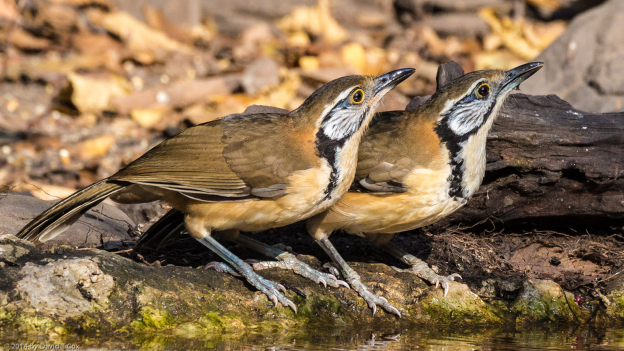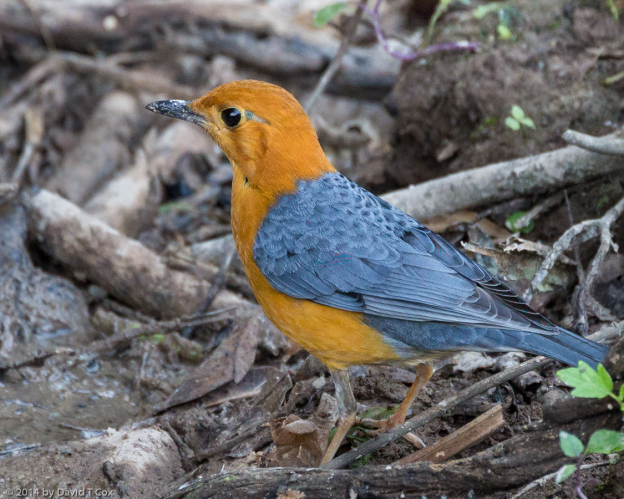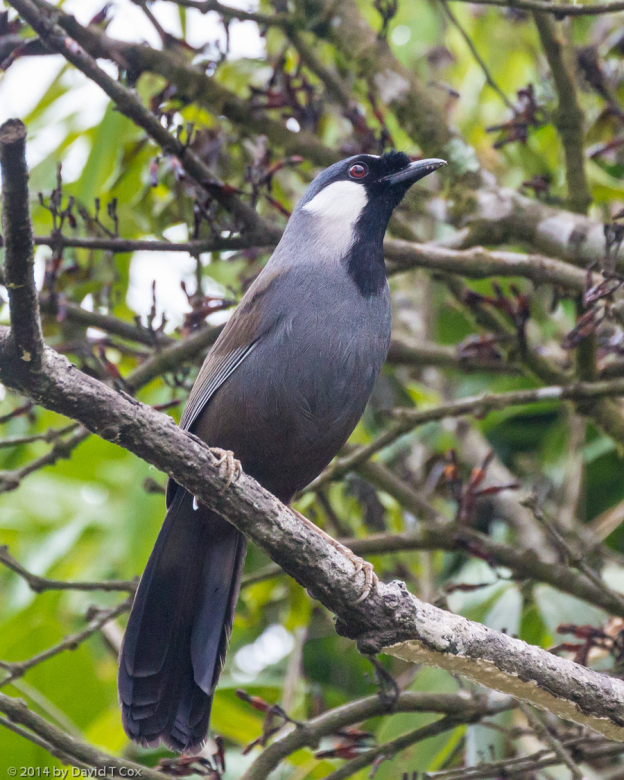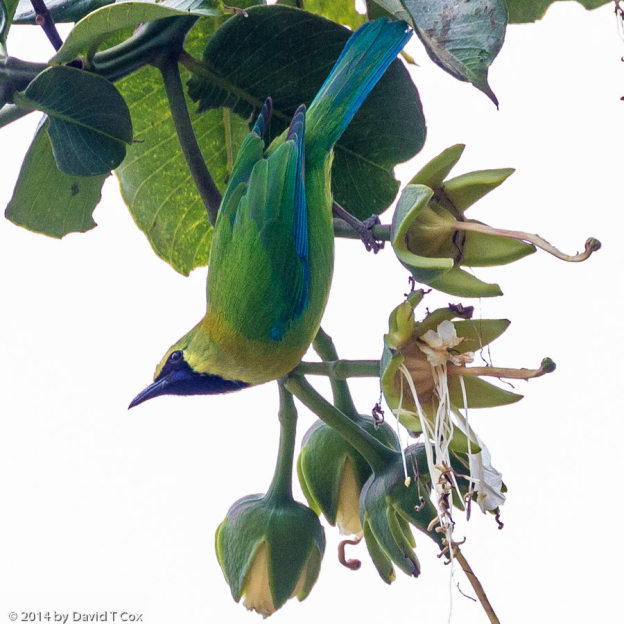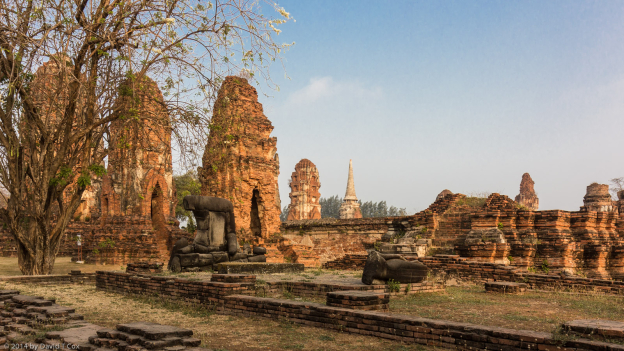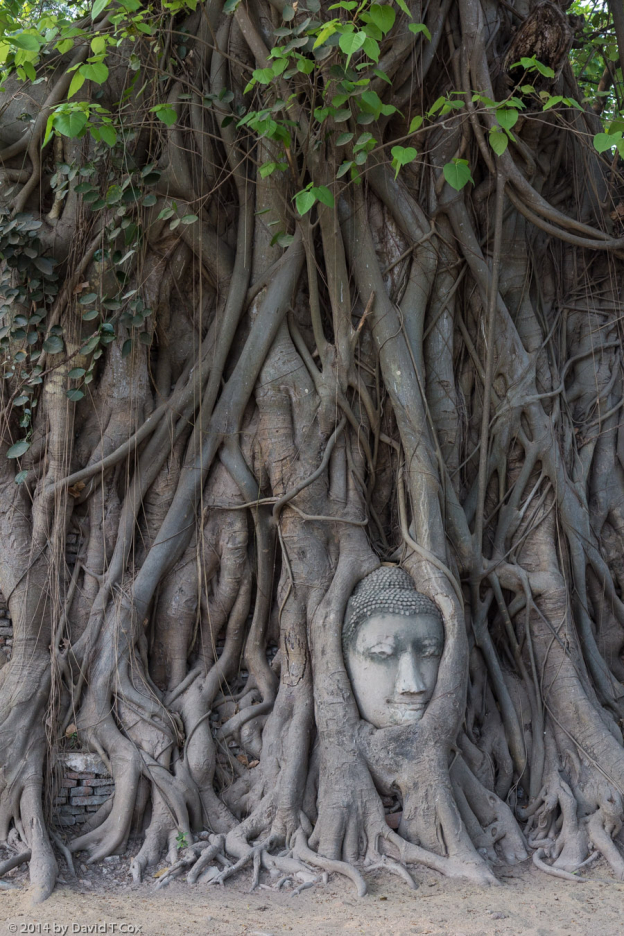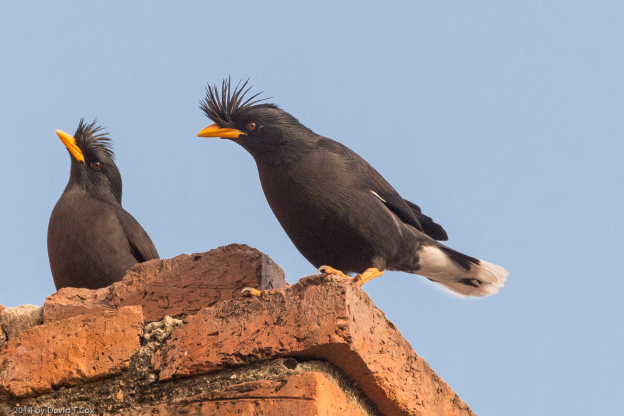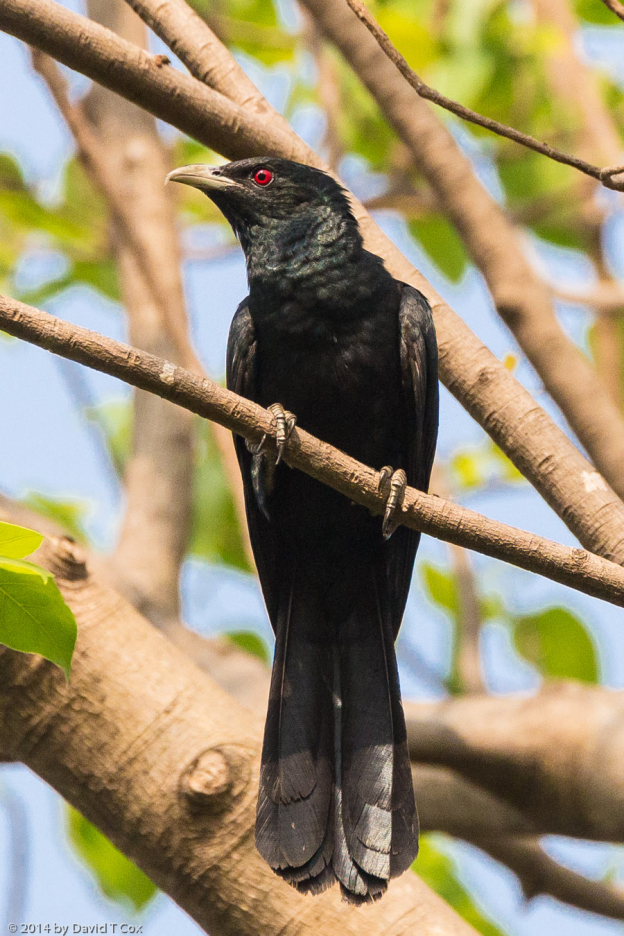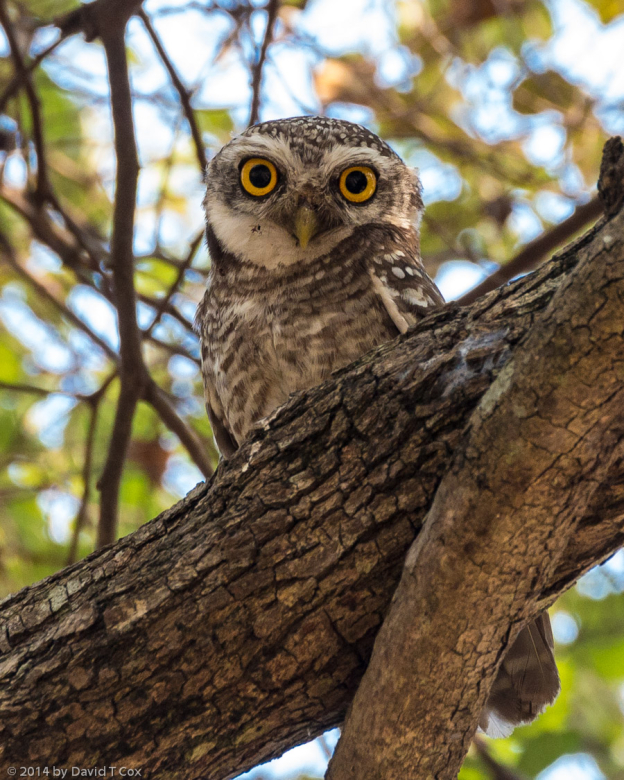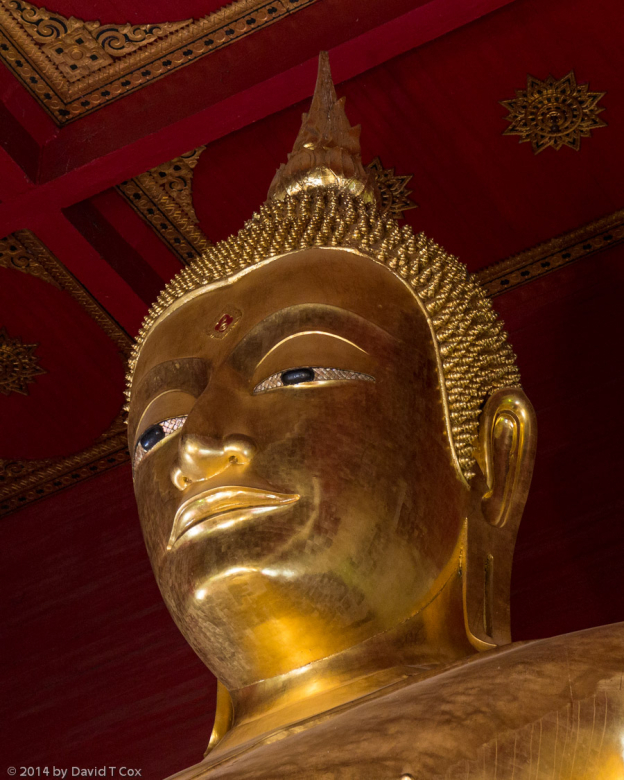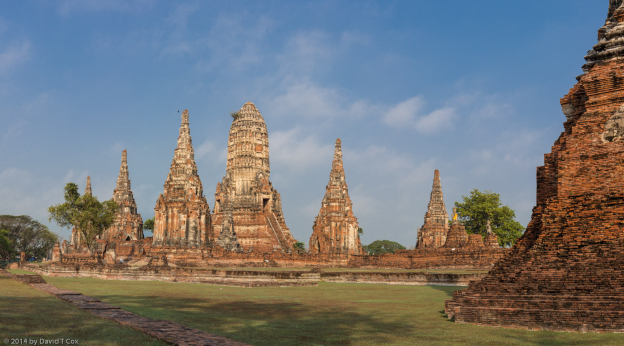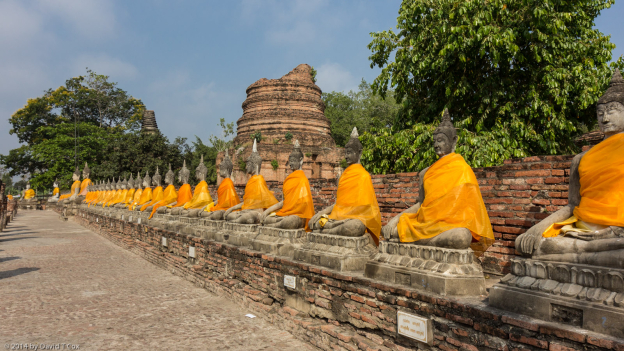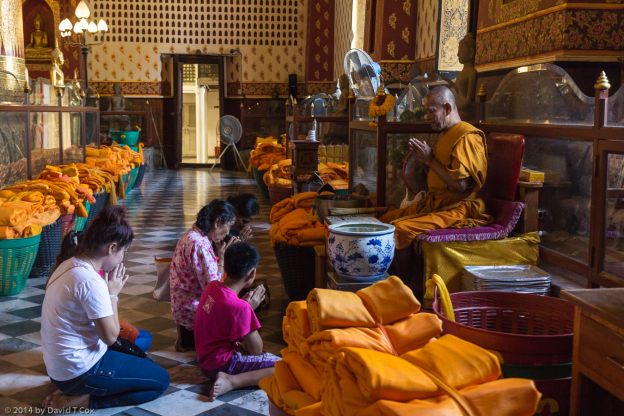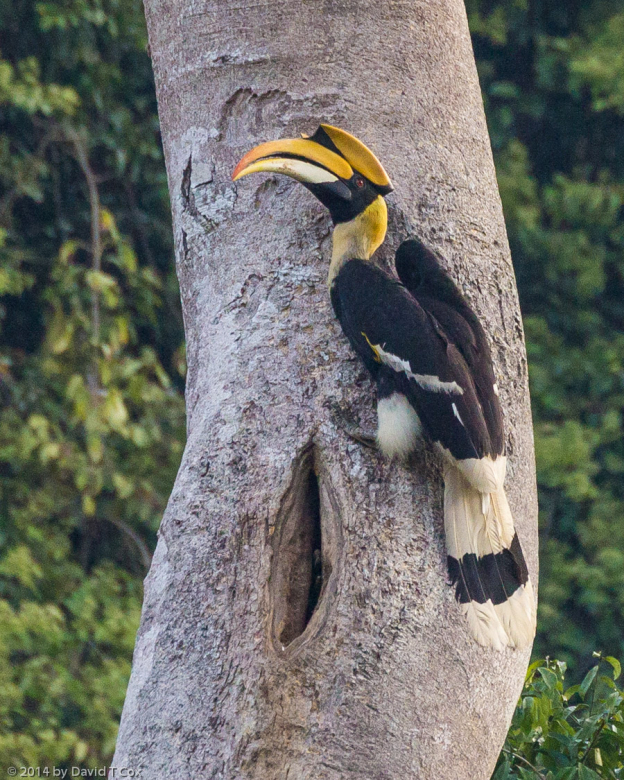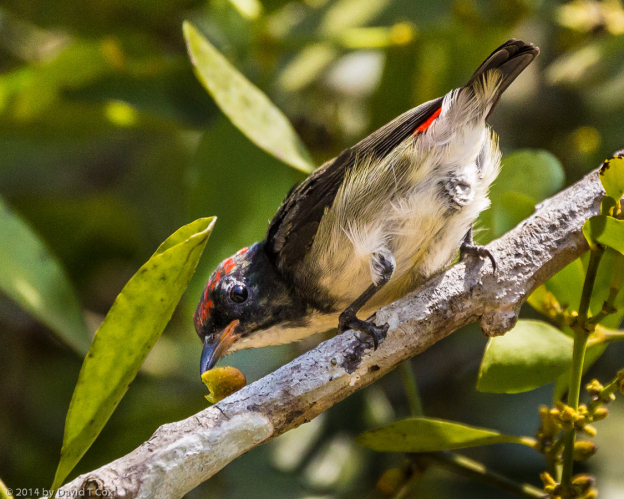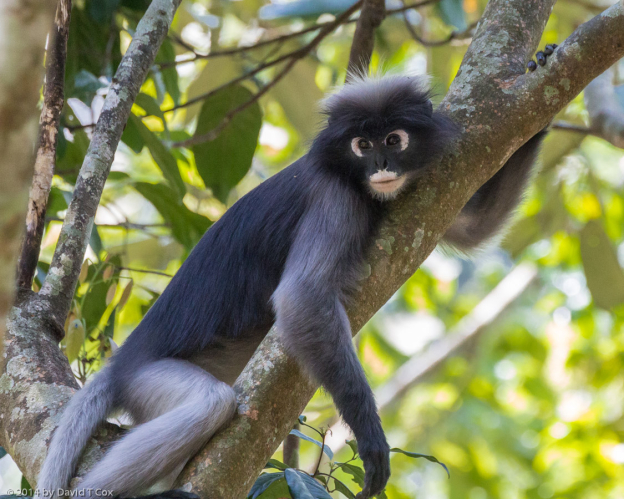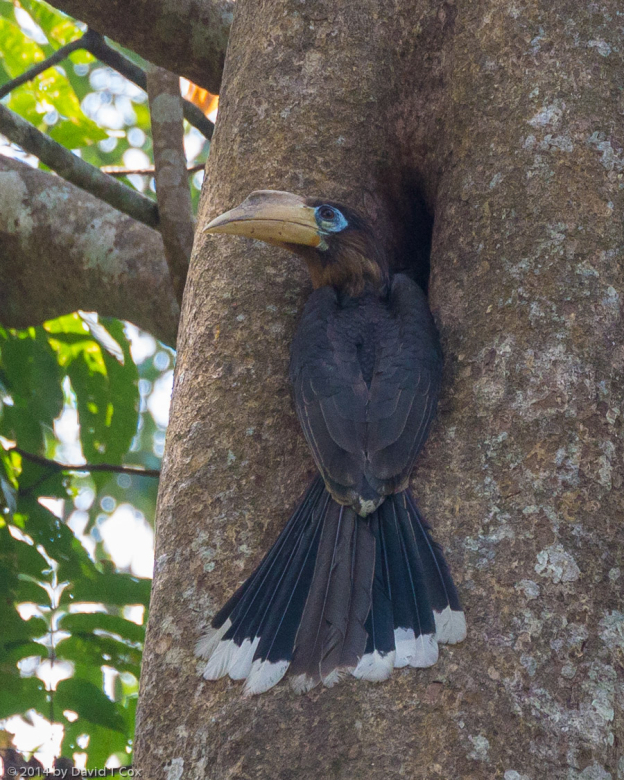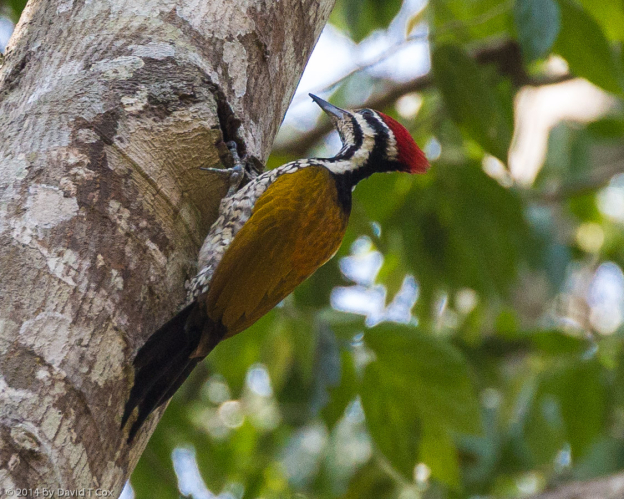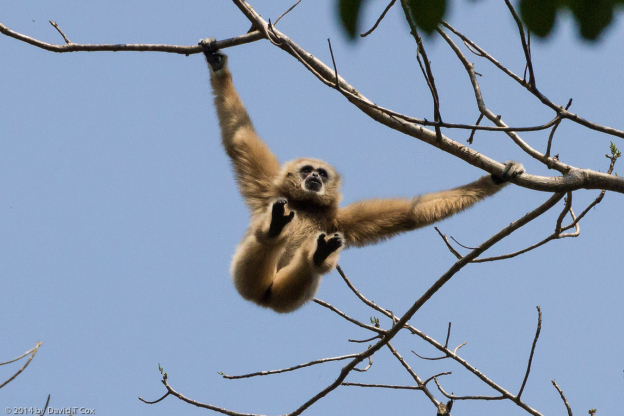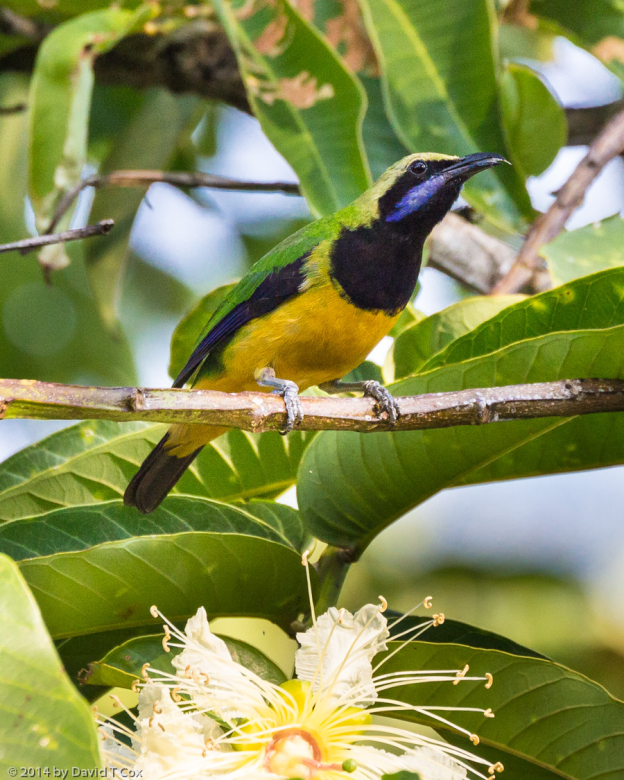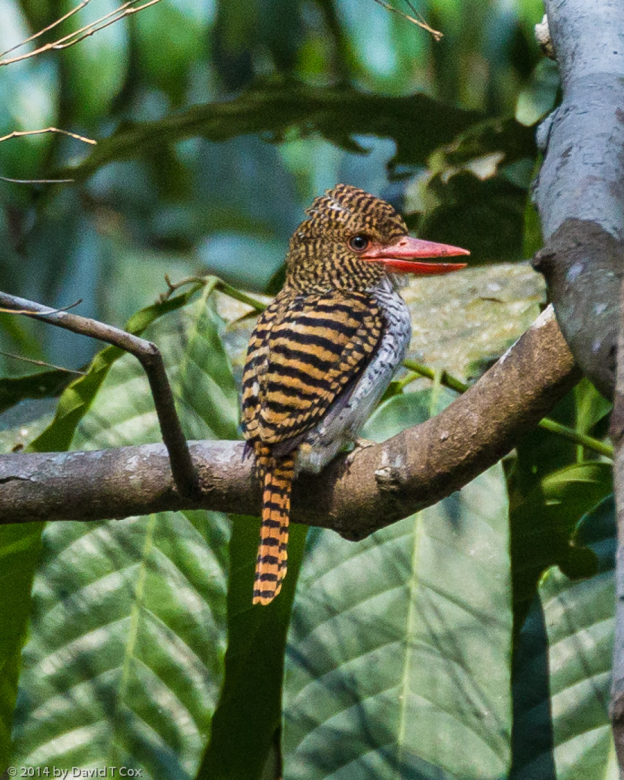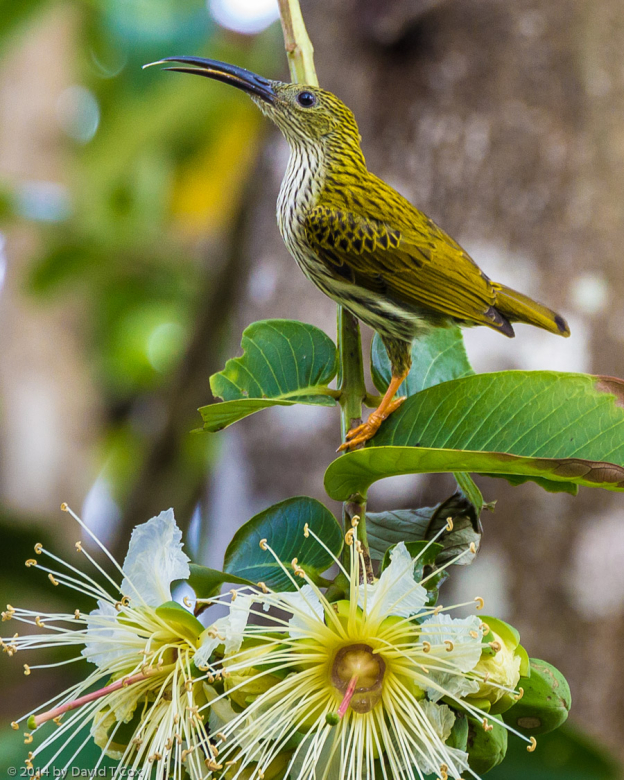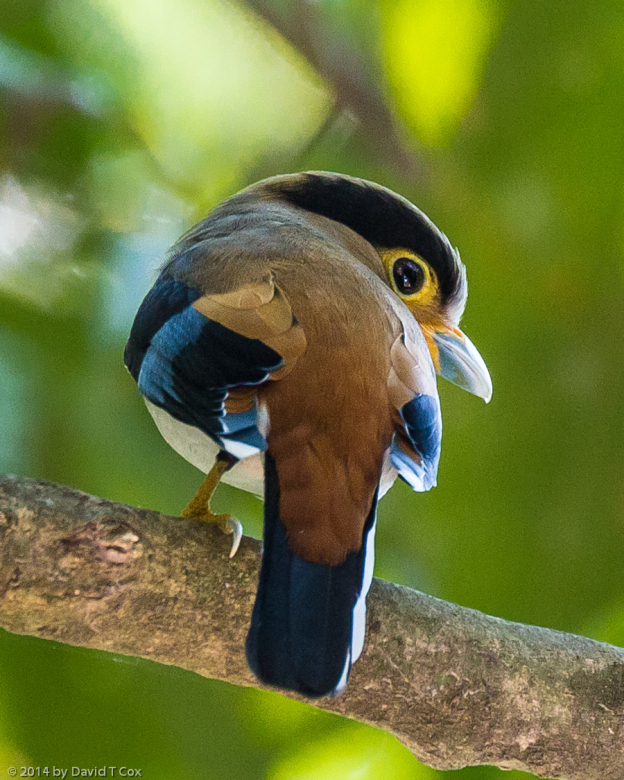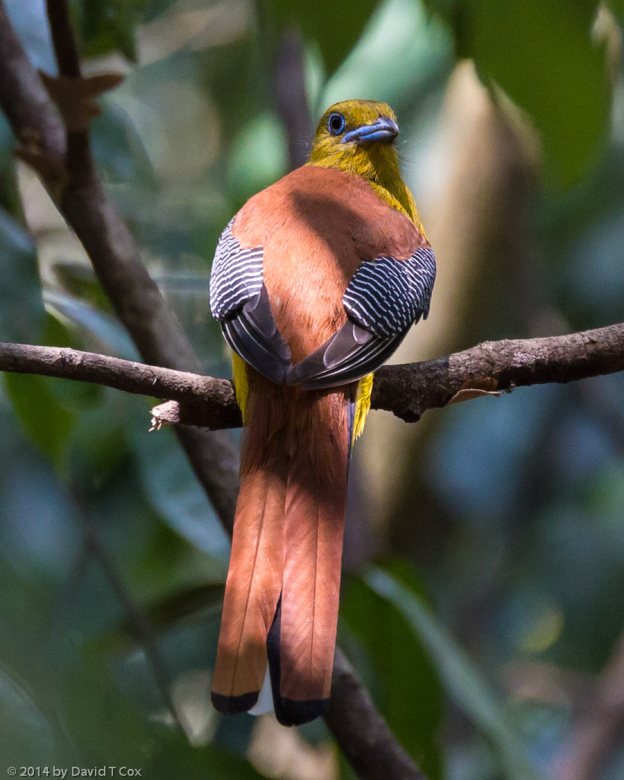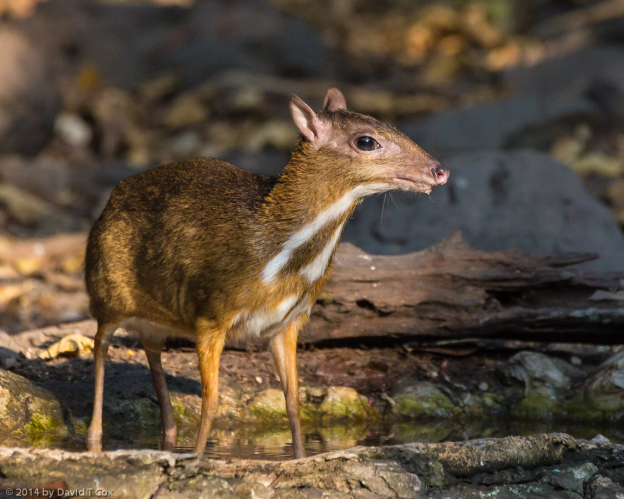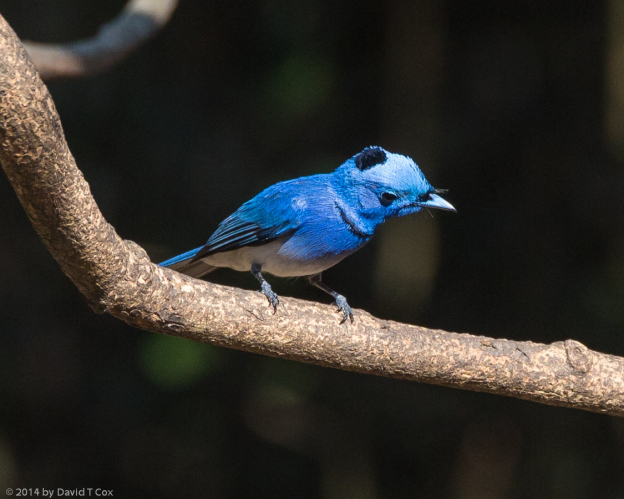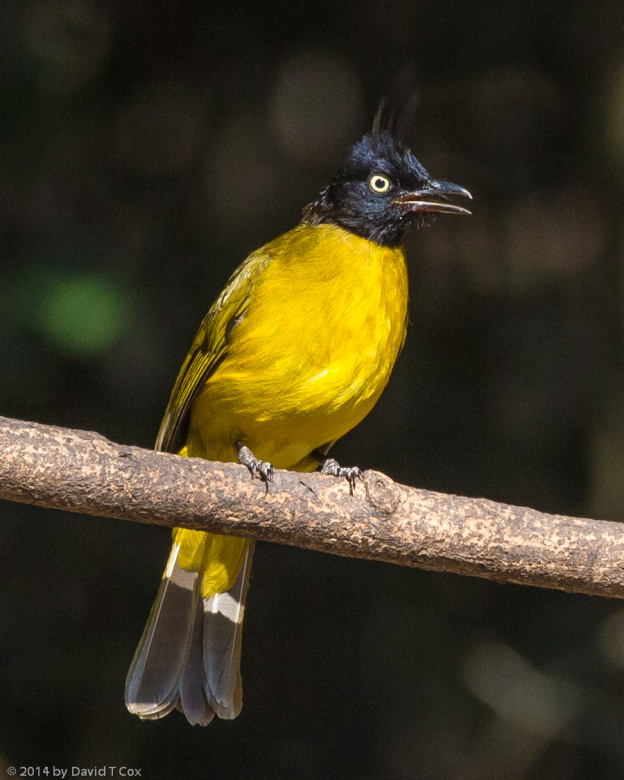All Photos Are Below the Travelogue Text
Click on Any Photo To Open Slide Show
To print the travelogue, right click anywhere on the page. Choose "Print" from your browser dialog box. You can choose Save to PDF in the browser print window.
Share your thoughts.
Email Dave - coxdavid55@hotmail.com
Hello all. I last wrote from Pak Chong on Feb. 27, where I was employing private guides to visit the Khao Yai National Park, photographing birds and wildlife. I spent several more days in Pak Chong, and my final day in the park proved very successful; I was able to get a number of new bird species including the Orange-headed Thrush, Black-throated Laughingthrush and Blue-winged Leafbird, as well as good encounters with a pair of Coral-billed Ground Cuckoos; I saw Pileated Gibbons at a great distance (they are endangered and extremely rare to see), and finally spent a half hour photographing a large family group of Asian elephants with a number of juveniles and two babies.
On Sunday a week ago I traveled by train to Ayutthaya – where a modern town surrounds the ancient island created by special channeling of two rivers. The island is 3 to 4 kilometers on each side, and much of the western half holds the remains of the ancient Ayutthaya, the former Thai capital of Siam (the country since the 1950s is known as Thailand). Ancient Ayutthaya was founded in 1351 by King Ramathibodi I and remained the Thai capital for over 400 years until 1767, when the Burmese captured and ravaged the city. Subsequently the capital was moved to present day Bangkok. Many of the ancient temples, wats and palace buildings remain, and are remarkable sights – most of the sites are archaeological ruins which may be visited, but several of the wats still are in use and have been continuously used by Buddhist monks since the 14th century.
My first day I visited the various ruins located roughly toward the center of the island; the best way to get around is by bicycle, so I rented one (real clunkers, but with large tires, and ok saddles, but terrible brakes – fortunately no hills, and little speed, so brakes were largely unnecessary). Early morning found me at Wat Phra Mahathat, built in the 14th century – photogenic brick chedis and countless stone seated Buddhas, all headless (except for one which has been repaired). The image most representative of this temple (and perhaps the most photographed in Ayutthaya) is a lone Buddha stone head, now completely ingrown within the intertwining roots of a bodhi tree (see image below). Just north of this Wat lie the ruins of Wat Ratburana, built in 1424 by King Boromraja II in honor of his two elder brothers, who fought each other on elephant-back, dueling for succession to the throne, managing to kill each other. There I was most fortunate to locate and photograph a Spotted Owlet along with the ruins.
During the terrific heat of mid-day I visited the Wat Phra Si Sanphet, built in 1448 by King Boromatrailokanat (I can only pronounce the name after my afternoon beers); this is the best of the Ayutthayan temples with its massive triple chedi buildings, each housing the ashes of a different king. The site also used to house the Phra Si Sanphet – a 16 meter high bronze Buddha, constructed in 1503, completely covered in gold – The Burmese, when they sacked the city, broke the bronze into pieces and fired them to melt and extract all the gold. Just to the south is the Viharn Phra Mongkol Bopit built in the 20th century to house a 12.5 meter high bronze Buddha which was cast in the 15th century and had stood outside unprotected for 500 years. Here and in all the nearby active wats the locals pay homage to the smaller stone and bronze Buddha statues by purchasing small stamp-sized gold leaf on paper backs, which they then press onto the outer surface of the statues. The statues thus eventually become completely covered in a thin layer of gold.
My second day I hired a private tuk tuk in order to visit ruins around the perimeter of the island (the tuk tuks in Ayutthaya are different than all other tuk tuks in Thailand, which in turn are very different than in Cambodia, in that the Ayutthaya tuk tuks have enclosed front cabs over the forward wheel, and are steered with a steering wheel rather than the motorcycle type handlebars). Wat Chai Watthanaram to the west, constructed in 1630, late in the Ayutthaya period, is built in the impressive Khmer style of Angkor, and being harder to get to is much less visited by tourists. Wat Yai Chai Mongkol to the east was established by King Ramathibodi I in 1357, and parts are still active today. Around the perimeter walls of the chedi are hundreds of seated stone Buddha statues which all are draped in bright orange garb – a real visual treat.
Last Wednesday I made a long day of travel, by train to Bangkok and then onward south by train to get to Hua Hin, in the north of the Thai peninsula. The train from Ayutthaya left at 5:40 in the morning, and originated there rather than passing through. I was somewhat confused as the train was empty upon arrival at the station, and there were not nearly enough people to fill it. As we traveled I noted the relative lack of seats, and the long rows of handholds from the ceiling. The use became obvious an hour later as we were half way to central Bangkok, when the train quickly filled to overflowing capacity. Gradually all passengers detrained, and the train was once again close to empty when we hit the Banglamphu Train station. It was the early morning commuter train from the north.
From Hua Hin I was transported to Samarn Bird Camp at the entrance to the Kaeng Krachan National Park, considered by some to be the best birding site in Thailand. I had been able to make arrangements for private transport and guide inside Krang Krachan. It is the largest Park in Thailand, and covers a heavily rain-forested mountain region which continues unbroken across the border into Myanmar. Much of the forest is broadleaf with huge clumps of bamboo, and a number of small streams flow through where often the butterflies gather at damp clays for the mineral content. As with Khao Yai, it is home not just to spectacular birds, but also to tiger, leopard, Asian elephant, gaur, Asian black bear along with many deer, primate and smaller mammal species. I spent 4 days there and was rewarded with many new and spectacular bird and mammal sightings once again. I met a delightful young European university biology student (Ariel) spending his 3 week spring vacation touring for birds in Thailand and Cambodia; his family breeds pheasants, and he had spent time working in Cambodia and knew the birds well. He joined me and shared the cost on the guided outings I had arranged, and turned out to be as helpful as the guide in finding and identifying birds. We spent two long days in the park, up and down the very steep mountainsides, and part of a third day at a blind set up over water just outside the park. Among the memorable sightings were both Great Hornbill and Tickell’s Brown Hornbill feeding their mates at their nest holes in giant trees; Orange-breasted Leafbird, Streaked Spiderhunter, Red-bearded Bee-Eater, Silver-breasted Broadbill, Greater Necklaced Laughingthrush and Orange-breasted Trogon. We also had numerous encounters with the Dusky Langur monkeys, as well as seeing White-handed Gibbons, a number of squirrel species including the truly huge Black Giant Squirrel, and the diminutive Mouse Deer.
On Sunday I returned to Bangkok and am passing my final two days at the New Siam Riverside Hotel, continuing work on the huge number of photos I have taken the last week and a half. I have found a nice little Indian restaurant where I often eat dinner. Tomorrow I head to the airport for the grueling 26 hour flight back to Tucson, and so close out this trip. Later. Dave
To print the travelogue, right click anywhere on the page. Choose "Print" from your browser dialog box. You can choose Save to PDF in the browser print window.
Share your thoughts.
Email Dave - coxdavid55@hotmail.com
